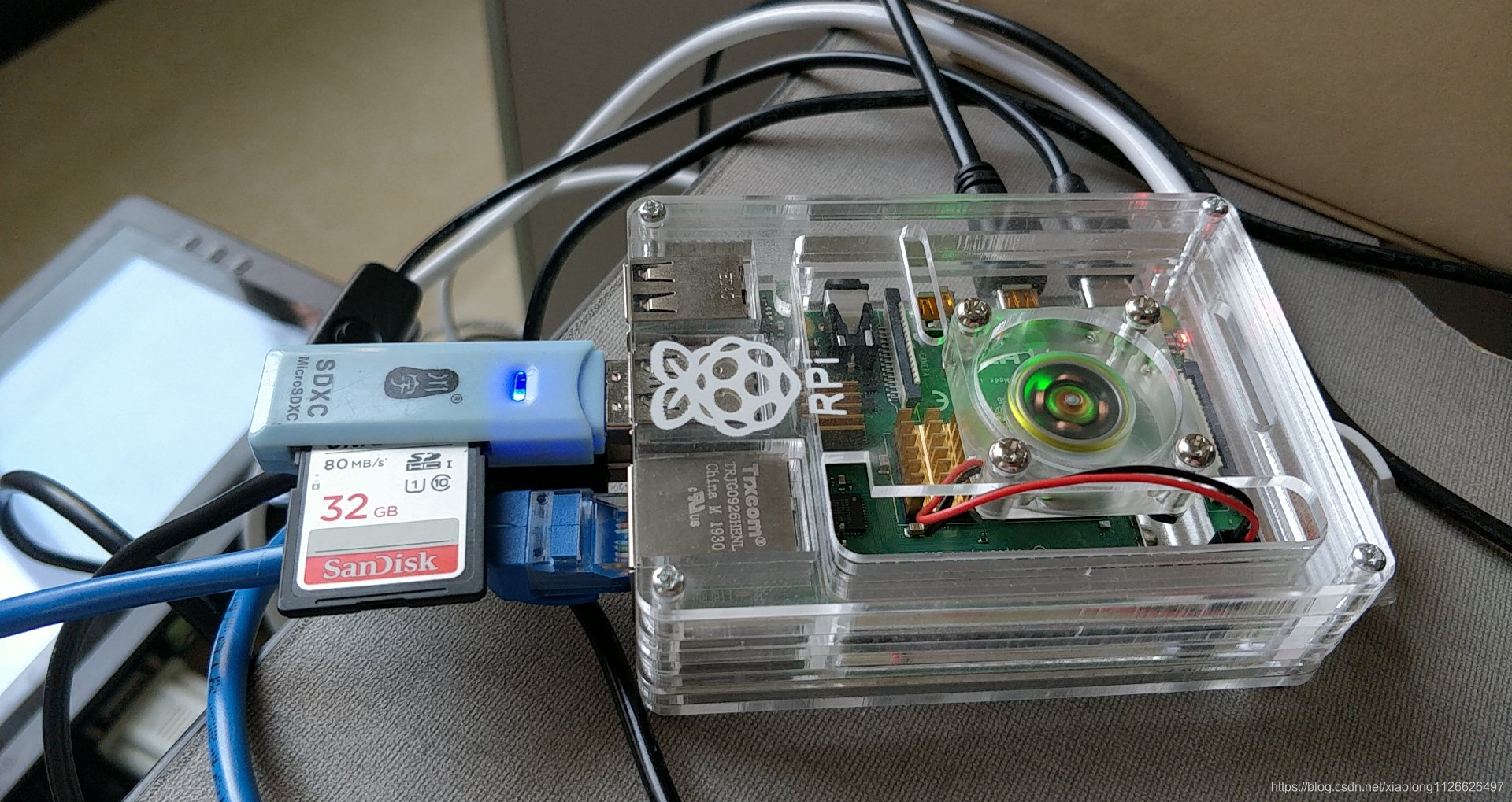树莓派4B:编译安装FFMPEG与X264
本文共 14224 字,大约阅读时间需要 47 分钟。
一、环境介绍
开发板:树莓派4B
操作方式:windows远程桌面连接
远程桌面连接参考这里:
二、编译安装X264
下面一切都在树莓派4B上操作,下面步骤里下载各种安装包之后(下载通过树莓派4B自带的谷歌浏览器下载),再将安装包移动到U盘里进行编译的,主要是树莓派4B本身空间不大。

2.1 编译安装NASM
下载NASM库:

pi@raspberrypi:/media/pi/DS小龙哥/work $ mv /home/pi/Downloads/nasm-2.14.02.tar.bz2 ./pi@raspberrypi:/media/pi/DS小龙哥/work $ tar xvf nasm-2.14.02.tar.bz2 pi@raspberrypi:/media/pi/DS小龙哥/work $ cd nasm-2.14.02/pi@raspberrypi:/media/pi/DS小龙哥/work/nasm-2.14.02 $ ./configurepi@raspberrypi:/media/pi/DS小龙哥/work/nasm-2.14.02 $ makepi@raspberrypi:/media/pi/DS小龙哥/work/nasm-2.14.02 $ sudo make install
2.2 下载编译X264
下载地址:

pi@raspberrypi:/media/pi/DS小龙哥/work $ mv /home/pi/Downloads/x264-master.tar.bz2 ./pi@raspberrypi:/media/pi/DS小龙哥/work $ tar xvf x264-master.tar.bz2 pi@raspberrypi:/media/pi/DS小龙哥/work $ cd x264-master/pi@raspberrypi:/media/pi/DS小龙哥/work/x264-maste $ ./configure --prefix=$PWD/_install --enable-sharedpi@raspberrypi:/media/pi/DS小龙哥/work/x264-master $ make && make installpi@raspberrypi:/media/pi/DS小龙哥/work/x264-master $ sudo cp _install/include /usr/ -rfpi@raspberrypi:/media/pi/DS小龙哥/work/x264-master $ sudo cp _install/lib /usr/ -rf
下面图片是编译之后生成的文件:

2.3 下载编译FFMPEG库
下载地址:

pi@raspberrypi:/media/pi/DS小龙哥/work $ mv /home/pi/Downloads/ffmpeg-4.2.2.tar.bz2 ./pi@raspberrypi:/media/pi/DS小龙哥/work $ tar xvf ffmpeg-4.2.2.tar.bz2pi@raspberrypi:/media/pi/DS小龙哥/work $ cd ffmpeg-4.2.2/pi@raspberrypi:/media/pi/DS小龙哥/work/ffmpeg-4.2.2 $ sudo apt-get install libomxil-bellagio-devpi@raspberrypi:/media/pi/DS小龙哥/work/ffmpeg-4.2.2 $ ./configure --enable-shared --prefix=$PWD/_install --enable-gpl --enable-libx264 --enable-omx-rpi --enable-mmal --enable-hwaccel=h264_mmal --enable-decoder=h264_mmal --enable-encoder=h264_omx --enable-omxpi@raspberrypi:/media/pi/DS小龙哥/work/ffmpeg-4.2.2 $ make && make installpi@raspberrypi:/media/pi/DS小龙哥/work/ffmpeg-4.2.2 $ sudo cp _install/include /usr/ -rfpi@raspberrypi:/media/pi/DS小龙哥/work/ffmpeg-4.2.2 $ sudo cp _install/lib /usr/ -rfpi@raspberrypi:/media/pi/DS小龙哥/work/ffmpeg-4.2.2 $ sudo cp _install/bin /usr/ -rfpi@raspberrypi:/media/pi/DS小龙哥/work/ffmpeg-4.2.2 $ ffmpeg -vffmpeg version 4.2.2 Copyright (c) 2000-2019 the FFmpeg developers built with gcc 8 (Raspbian 8.3.0-6+rpi1) configuration: --enable-shared --prefix='/media/pi/DS小龙哥/work/ffmpeg-4.2.2/_install' --enable-gpl --enable-libx264 --enable-omx-rpi --enable-mmal --enable-hwaccel=h264_mmal --enable-decoder=h264_mmal --enable-encoder=h264_omx --enable-omx WARNING: library configuration mismatch avutil configuration: --prefix=/usr --extra-version='1+rpt7~deb10u1' --toolchain=hardened --incdir=/usr/include/arm-linux-gnueabihf --enable-gpl --disable-stripping --enable-avresample --disable-filter=resample --enable-avisynth --enable-gnutls --enable-ladspa --enable-libaom --enable-libass --enable-libbluray --enable-libbs2b --enable-libcaca --enable-libcdio --enable-libcodec2 --enable-libflite --enable-libfontconfig --enable-libfreetype --enable-libfribidi --enable-libgme --enable-libgsm --enable-libjack --enable-libmp3lame --enable-libmysofa --enable-libopenjpeg --enable-libopenmpt --enable-libopus --enable-libpulse --enable-librsvg --enable-librubberband --enable-libshine --enable-libsnappy --enable-libsoxr --enable-libspeex --enable-libssh --enable-libtheora --enable-libtwolame --enable-libvidstab --enable-libvorbis --enable-libvpx --enable-libwavpack --enable-libwebp --enable-libx265 --enable-libxml2 --enable-libxvid --enable-libzmq --enable-libzvbi --enable-lv2 --enable-omx --enable-openal --enable-opengl --enable-sdl2 --enable-omx-rpi --enable-mmal --enable-neon --enable-rpi --enable-libdc1394 --enable-libdrm --enable-libiec61883 --enable-chromaprint --enable-frei0r --enable-libx264 --libdir=/usr/lib/arm-linux-gnueabihf/neon/vfp --cpu=cortex-a7 --arch=armv6t2 --disable-thumb --enable-shared --disable-doc --disable-programs avcodec configuration: --prefix=/usr --extra-version='1+rpt7~deb10u1' --toolchain=hardened --incdir=/usr/include/arm-linux-gnueabihf --enable-gpl --disable-stripping --enable-avresample --disable-filter=resample --enable-avisynth --enable-gnutls --enable-ladspa --enable-libaom --enable-libass --enable-libbluray --enable-libbs2b --enable-libcaca --enable-libcdio --enable-libcodec2 --enable-libflite --enable-libfontconfig --enable-libfreetype --enable-libfribidi --enable-libgme --enable-libgsm --enable-libjack --enable-libmp3lame --enable-libmysofa --enable-libopenjpeg --enable-libopenmpt --enable-libopus --enable-libpulse --enable-librsvg --enable-librubberband --enable-libshine --enable-libsnappy --enable-libsoxr --enable-libspeex --enable-libssh --enable-libtheora --enable-libtwolame --enable-libvidstab --enable-libvorbis --enable-libvpx --enable-libwavpack --enable-libwebp --enable-libx265 --enable-libxml2 --enable-libxvid --enable-libzmq --enable-libzvbi --enable-lv2 --enable-omx --enable-openal --enable-opengl --enable-sdl2 --enable-omx-rpi --enable-mmal --enable-neon --enable-rpi --enable-libdc1394 --enable-libdrm --enable-libiec61883 --enable-chromaprint --enable-frei0r --enable-libx264 --libdir=/usr/lib/arm-linux-gnueabihf/neon/vfp --cpu=cortex-a7 --arch=armv6t2 --disable-thumb --enable-shared --disable-doc --disable-programs avformat configuration: --prefix=/usr --extra-version='1+rpt7~deb10u1' --toolchain=hardened --incdir=/usr/include/arm-linux-gnueabihf --enable-gpl --disable-stripping --enable-avresample --disable-filter=resample --enable-avisynth --enable-gnutls --enable-ladspa --enable-libaom --enable-libass --enable-libbluray --enable-libbs2b --enable-libcaca --enable-libcdio --enable-libcodec2 --enable-libflite --enable-libfontconfig --enable-libfreetype --enable-libfribidi --enable-libgme --enable-libgsm --enable-libjack --enable-libmp3lame --enable-libmysofa --enable-libopenjpeg --enable-libopenmpt --enable-libopus --enable-libpulse --enable-librsvg --enable-librubberband --enable-libshine --enable-libsnappy --enable-libsoxr --enable-libspeex --enable-libssh --enable-libtheora --enable-libtwolame --enable-libvidstab --enable-libvorbis --enable-libvpx --enable-libwavpack --enable-libwebp --enable-libx265 --enable-libxml2 --enable-libxvid --enable-libzmq --enable-libzvbi --enable-lv2 --enable-omx --enable-openal --enable-opengl --enable-sdl2 --enable-omx-rpi --enable-mmal --enable-neon --enable-rpi --enable-libdc1394 --enable-libdrm --enable-libiec61883 --enable-chromaprint --enable-frei0r --enable-libx264 --libdir=/usr/lib/arm-linux-gnueabihf/neon/vfp --cpu=cortex-a7 --arch=armv6t2 --disable-thumb --enable-shared --disable-doc --disable-programs avdevice configuration: --prefix=/usr --extra-version='1+rpt7~deb10u1' --toolchain=hardened --incdir=/usr/include/arm-linux-gnueabihf --enable-gpl --disable-stripping --enable-avresample --disable-filter=resample --enable-avisynth --enable-gnutls --enable-ladspa --enable-libaom --enable-libass --enable-libbluray --enable-libbs2b --enable-libcaca --enable-libcdio --enable-libcodec2 --enable-libflite --enable-libfontconfig --enable-libfreetype --enable-libfribidi --enable-libgme --enable-libgsm --enable-libjack --enable-libmp3lame --enable-libmysofa --enable-libopenjpeg --enable-libopenmpt --enable-libopus --enable-libpulse --enable-librsvg --enable-librubberband --enable-libshine --enable-libsnappy --enable-libsoxr --enable-libspeex --enable-libssh --enable-libtheora --enable-libtwolame --enable-libvidstab --enable-libvorbis --enable-libvpx --enable-libwavpack --enable-libwebp --enable-libx265 --enable-libxml2 --enable-libxvid --enable-libzmq --enable-libzvbi --enable-lv2 --enable-omx --enable-openal --enable-opengl --enable-sdl2 --enable-omx-rpi --enable-mmal --enable-neon --enable-rpi --enable-libdc1394 --enable-libdrm --enable-libiec61883 --enable-chromaprint --enable-frei0r --enable-libx264 --libdir=/usr/lib/arm-linux-gnueabihf/neon/vfp --cpu=cortex-a7 --arch=armv6t2 --disable-thumb --enable-shared --disable-doc --disable-programs avfilter configuration: --prefix=/usr --extra-version='1+rpt7~deb10u1' --toolchain=hardened --incdir=/usr/include/arm-linux-gnueabihf --enable-gpl --disable-stripping --enable-avresample --disable-filter=resample --enable-avisynth --enable-gnutls --enable-ladspa --enable-libaom --enable-libass --enable-libbluray --enable-libbs2b --enable-libcaca --enable-libcdio --enable-libcodec2 --enable-libflite --enable-libfontconfig --enable-libfreetype --enable-libfribidi --enable-libgme --enable-libgsm --enable-libjack --enable-libmp3lame --enable-libmysofa --enable-libopenjpeg --enable-libopenmpt --enable-libopus --enable-libpulse --enable-librsvg --enable-librubberband --enable-libshine --enable-libsnappy --enable-libsoxr --enable-libspeex --enable-libssh --enable-libtheora --enable-libtwolame --enable-libvidstab --enable-libvorbis --enable-libvpx --enable-libwavpack --enable-libwebp --enable-libx265 --enable-libxml2 --enable-libxvid --enable-libzmq --enable-libzvbi --enable-lv2 --enable-omx --enable-openal --enable-opengl --enable-sdl2 --enable-omx-rpi --enable-mmal --enable-neon --enable-rpi --enable-libdc1394 --enable-libdrm --enable-libiec61883 --enable-chromaprint --enable-frei0r --enable-libx264 --libdir=/usr/lib/arm-linux-gnueabihf/neon/vfp --cpu=cortex-a7 --arch=armv6t2 --disable-thumb --enable-shared --disable-doc --disable-programs swscale configuration: --prefix=/usr --extra-version='1+rpt7~deb10u1' --toolchain=hardened --incdir=/usr/include/arm-linux-gnueabihf --enable-gpl --disable-stripping --enable-avresample --disable-filter=resample --enable-avisynth --enable-gnutls --enable-ladspa --enable-libaom --enable-libass --enable-libbluray --enable-libbs2b --enable-libcaca --enable-libcdio --enable-libcodec2 --enable-libflite --enable-libfontconfig --enable-libfreetype --enable-libfribidi --enable-libgme --enable-libgsm --enable-libjack --enable-libmp3lame --enable-libmysofa --enable-libopenjpeg --enable-libopenmpt --enable-libopus --enable-libpulse --enable-librsvg --enable-librubberband --enable-libshine --enable-libsnappy --enable-libsoxr --enable-libspeex --enable-libssh --enable-libtheora --enable-libtwolame --enable-libvidstab --enable-libvorbis --enable-libvpx --enable-libwavpack --enable-libwebp --enable-libx265 --enable-libxml2 --enable-libxvid --enable-libzmq --enable-libzvbi --enable-lv2 --enable-omx --enable-openal --enable-opengl --enable-sdl2 --enable-omx-rpi --enable-mmal --enable-neon --enable-rpi --enable-libdc1394 --enable-libdrm --enable-libiec61883 --enable-chromaprint --enable-frei0r --enable-libx264 --libdir=/usr/lib/arm-linux-gnueabihf/neon/vfp --cpu=cortex-a7 --arch=armv6t2 --disable-thumb --enable-shared --disable-doc --disable-programs swresample configuration: --prefix=/usr --extra-version='1+rpt7~deb10u1' --toolchain=hardened --incdir=/usr/include/arm-linux-gnueabihf --enable-gpl --disable-stripping --enable-avresample --disable-filter=resample --enable-avisynth --enable-gnutls --enable-ladspa --enable-libaom --enable-libass --enable-libbluray --enable-libbs2b --enable-libcaca --enable-libcdio --enable-libcodec2 --enable-libflite --enable-libfontconfig --enable-libfreetype --enable-libfribidi --enable-libgme --enable-libgsm --enable-libjack --enable-libmp3lame --enable-libmysofa --enable-libopenjpeg --enable-libopenmpt --enable-libopus --enable-libpulse --enable-librsvg --enable-librubberband --enable-libshine --enable-libsnappy --enable-libsoxr --enable-libspeex --enable-libssh --enable-libtheora --enable-libtwolame --enable-libvidstab --enable-libvorbis --enable-libvpx --enable-libwavpack --enable-libwebp --enable-libx265 --enable-libxml2 --enable-libxvid --enable-libzmq --enable-libzvbi --enable-lv2 --enable-omx --enable-openal --enable-opengl --enable-sdl2 --enable-omx-rpi --enable-mmal --enable-neon --enable-rpi --enable-libdc1394 --enable-libdrm --enable-libiec61883 --enable-chromaprint --enable-frei0r --enable-libx264 --libdir=/usr/lib/arm-linux-gnueabihf/neon/vfp --cpu=cortex-a7 --arch=armv6t2 --disable-thumb --enable-shared --disable-doc --disable-programs postproc configuration: --prefix=/usr --extra-version='1+rpt7~deb10u1' --toolchain=hardened --incdir=/usr/include/arm-linux-gnueabihf --enable-gpl --disable-stripping --enable-avresample --disable-filter=resample --enable-avisynth --enable-gnutls --enable-ladspa --enable-libaom --enable-libass --enable-libbluray --enable-libbs2b --enable-libcaca --enable-libcdio --enable-libcodec2 --enable-libflite --enable-libfontconfig --enable-libfreetype --enable-libfribidi --enable-libgme --enable-libgsm --enable-libjack --enable-libmp3lame --enable-libmysofa --enable-libopenjpeg --enable-libopenmpt --enable-libopus --enable-libpulse --enable-librsvg --enable-librubberband --enable-libshine --enable-libsnappy --enable-libsoxr --enable-libspeex --enable-libssh --enable-libtheora --enable-libtwolame --enable-libvidstab --enable-libvorbis --enable-libvpx --enable-libwavpack --enable-libwebp --enable-libx265 --enable-libxml2 --enable-libxvid --enable-libzmq --enable-libzvbi --enable-lv2 --enable-omx --enable-openal --enable-opengl --enable-sdl2 --enable-omx-rpi --enable-mmal --enable-neon --enable-rpi --enable-libdc1394 --enable-libdrm --enable-libiec61883 --enable-chromaprint --enable-frei0r --enable-libx264 --libdir=/usr/lib/arm-linux-gnueabihf/neon/vfp --cpu=cortex-a7 --arch=armv6t2 --disable-thumb --enable-shared --disable-doc --disable-programs libavutil 56. 31.100 / 56. 22.100 libavcodec 58. 54.100 / 58. 35.100 libavformat 58. 29.100 / 58. 20.100 libavdevice 58. 8.100 / 58. 5.100 libavfilter 7. 57.100 / 7. 40.101 libswscale 5. 5.100 / 5. 3.100 libswresample 3. 5.100 / 3. 3.100 libpostproc 55. 5.100 / 55. 3.100
2.4 将库集合到一个目录下,方便后续编译调用,指定路径
pi@raspberrypi:~ $ pwd/home/pipi@raspberrypi:~ $ mkdir workpi@raspberrypi:~ $ cd work/pi@raspberrypi:~/work $ mkdir pi4b_ffmpeg_x264_libpi@raspberrypi:~/work $ cd pi4b_ffmpeg_x264_lib/ pi@raspberrypi:~/work/pi4b_ffmpeg_x264_lib $ cp /media/pi/DS小龙哥/work/ffmpeg-4.2.2/_install/* ./ -rfpi@raspberrypi:~/work/pi4b_ffmpeg_x264_lib $ cp /media/pi/DS小龙哥/work/x264-master/_install/* ./ -rfpi@raspberrypi:~/work/pi4b_ffmpeg_x264_lib $ lsbin include lib sharepi@raspberrypi:~/work/pi4b_ffmpeg_x264_lib $
转载地址:http://kjwt.baihongyu.com/
你可能感兴趣的文章
Nginx + uWSGI + Flask + Vhost
查看>>
Nginx - Header详解
查看>>
nginx - thinkphp 如何实现url的rewrite
查看>>
Nginx - 反向代理、负载均衡、动静分离、底层原理(案例实战分析)
查看>>
Nginx - 反向代理与负载均衡
查看>>
nginx 1.24.0 安装nginx最新稳定版
查看>>
nginx 301 永久重定向
查看>>
nginx 403 forbidden
查看>>
nginx connect 模块安装以及配置
查看>>
nginx css,js合并插件,淘宝nginx合并js,css插件
查看>>
Nginx gateway集群和动态网关
查看>>
nginx http配置说明,逐渐完善。
查看>>
Nginx keepalived一主一从高可用,手把手带你一步一步配置!
查看>>
Nginx Location配置总结
查看>>
Nginx log文件写入失败?log文件权限设置问题
查看>>
Nginx Lua install
查看>>
nginx net::ERR_ABORTED 403 (Forbidden)
查看>>
vue中处理过内存泄露处理方法
查看>>
Nginx RTMP 模块使用指南
查看>>
Nginx SSL 性能调优
查看>>